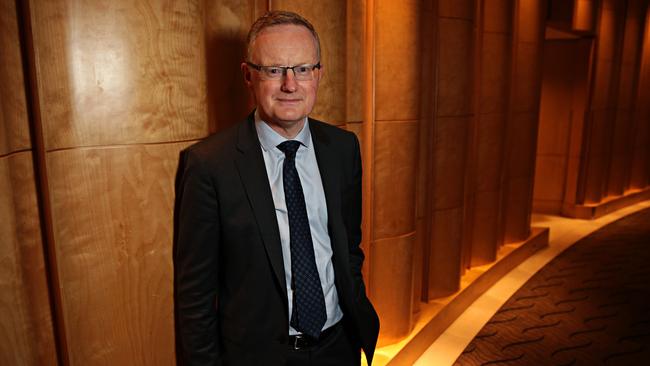RBA governor Philip Lowe says in BIS report quantitative easing helps revives economies
Philip Lowe has backed a new report that favours unconventional settings like negative interest rates.

Reserve Bank governor Philip Lowe has signed off on a new report that endorses setting interest rates below zero and creating new money to buy government bonds as a way of lifting inflation and economic growth.
In remarks that could be seen as a fresh call for governments to do more to stimulate their economy, Dr Lowe, in his capacity as chairman of the Switzerland-based committee on global financial stability, said fiscal policy and bank regulation needed to work in concert with monetary policy for it to be effective.
“One key lesson is that the tools are most effective when used together with a broader set of policies, like fiscal and prudential measures,” Dr Lowe said, referring to a new analysis of “unconventional” policies introduced since the financial crisis, including “negative interest rates”, “quantitative easing”, and “forward guidance”.
“On balance, unconventional monetary policies helped the central banks that used them address the circumstances presented by the crisis and the ensuing economic downturn,” Dr Lowe added.
Central banks in Europe, the UK, Japan and the US have cut their cash rates to near zero or below since the financial crisis, and issued trillions in new currency to buy government and corporate bonds in a bid to lower long-term interest rates.
The report comes at a sensitive time for the Reserve Bank, which last week cut its official interest rate for the third time this year to a new low of 0.75 per cent. The RBA has played down the likelihood of cutting the cash rate to zero and deemed introducing a quantitative easing program of its own as “unlikely”.
“The report identifies side effects, such as disincentives to private sector deleveraging and spillovers to other countries, but does not consider them sufficiently strong to reverse the benefits of UMPTs (unconventional monetary policy tools),” he said. Critics of ultra-low interest rates and money creation argue they increase assets prices, subsidise government borrowing, and could lead to inflation.
“All told, UMPTs are more effective when accompanied by appropriate supervisory, prudential and fiscal policies and embedded in a broader policy framework that avoids placing a disproportionate burden on the central bank,” the authors concluded.
His comments come as economists increasingly discuss the possibility of QE in Australia in the event that the RBA reaches the near-zero lower bound of interest rates and finds more stimulus is required.
RBA governor Philip Lowe said recently that while QE is unlikely to be needed, it’s “prudent” to consider.
While the vast majority of economists feel unconventional monetary policies are unlikely to be needed and some expect a stronger fiscal policy response from the federal government to provide enough support for the economy.
But some say QE is now likely in Australia once the cash rate is cut to 0.5 per cent or 0.25 per cent.
After the RBA last week appeared to raise the bar for what it’s trying to achieve in regard to employment and inflation, Nomura interest rate strategist Andrew Ticehurst described unconventional policy as “slightly more likely than not”.
Similarly, AMP Capital’s head of investment strategy, Shane Oliver, said: “it’s now likely that the RBA will have to undertake quantitative easing next year.”
Analysis from Goldman Sachs this week showed the RBA’s own macroeconomic model predicted a minus 1 per cent cash rate, or a near-zero rate plus a $200bn QE program, would be needed for the RBA to achieve its full-employment and target-inflation goals.
Dr Lowe, who was appointed chairman of the committee on global financial stability last year for a term of three years, has called on the government to spend more on infrastructure to help boost economic growth, which fell to 1.4 per cent over the year to June.
More Coverage






To join the conversation, please log in. Don't have an account? Register
Join the conversation, you are commenting as Logout